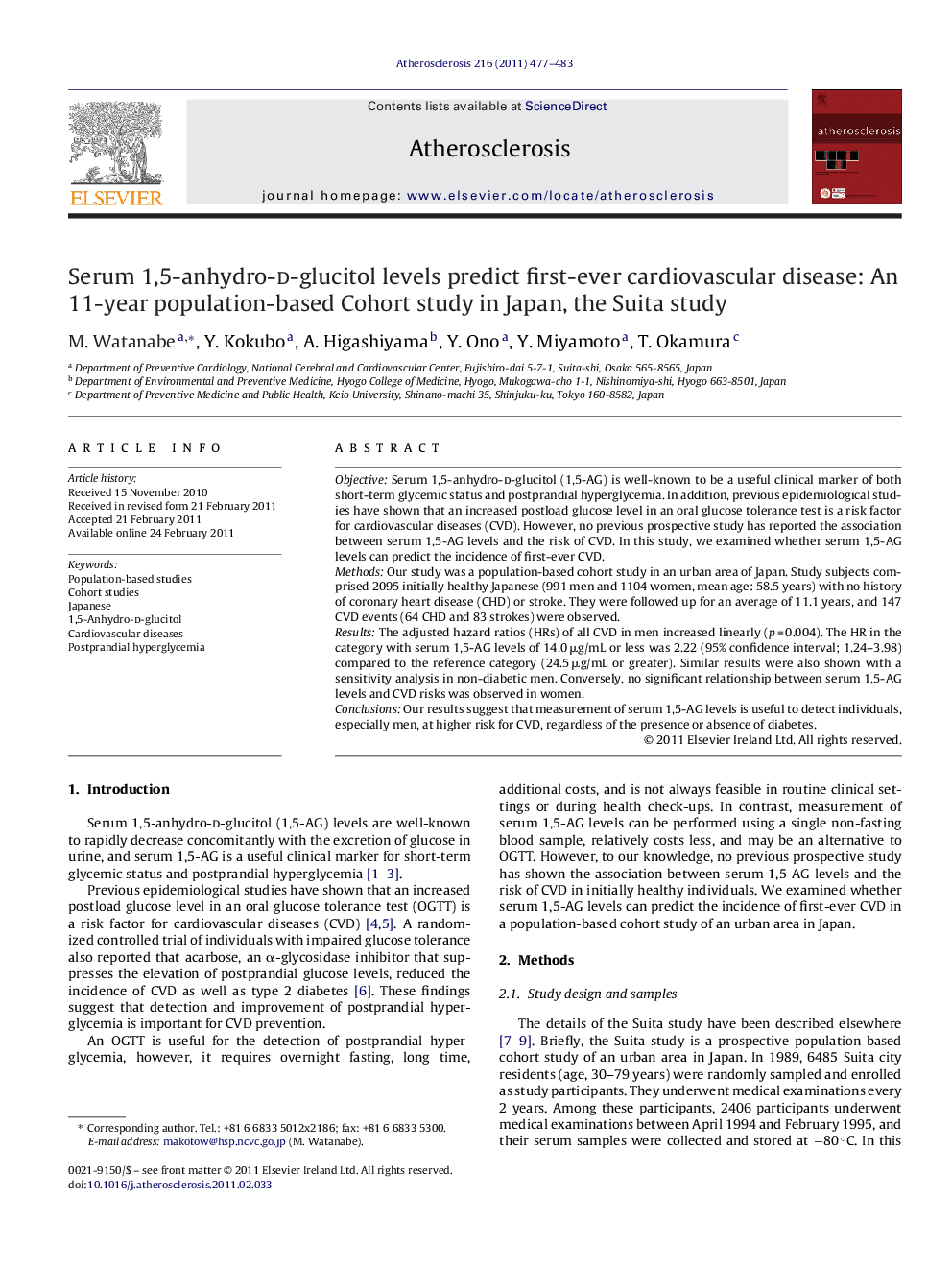| Article ID | Journal | Published Year | Pages | File Type |
|---|---|---|---|---|
| 5949519 | Atherosclerosis | 2011 | 7 Pages |
ObjectiveSerum 1,5-anhydro-d-glucitol (1,5-AG) is well-known to be a useful clinical marker of both short-term glycemic status and postprandial hyperglycemia. In addition, previous epidemiological studies have shown that an increased postload glucose level in an oral glucose tolerance test is a risk factor for cardiovascular diseases (CVD). However, no previous prospective study has reported the association between serum 1,5-AG levels and the risk of CVD. In this study, we examined whether serum 1,5-AG levels can predict the incidence of first-ever CVD.MethodsOur study was a population-based cohort study in an urban area of Japan. Study subjects comprised 2095 initially healthy Japanese (991 men and 1104 women, mean age: 58.5 years) with no history of coronary heart disease (CHD) or stroke. They were followed up for an average of 11.1 years, and 147 CVD events (64 CHD and 83 strokes) were observed.ResultsThe adjusted hazard ratios (HRs) of all CVD in men increased linearly (p = 0.004). The HR in the category with serum 1,5-AG levels of 14.0 μg/mL or less was 2.22 (95% confidence interval; 1.24-3.98) compared to the reference category (24.5 μg/mL or greater). Similar results were also shown with a sensitivity analysis in non-diabetic men. Conversely, no significant relationship between serum 1,5-AG levels and CVD risks was observed in women.ConclusionsOur results suggest that measurement of serum 1,5-AG levels is useful to detect individuals, especially men, at higher risk for CVD, regardless of the presence or absence of diabetes.
